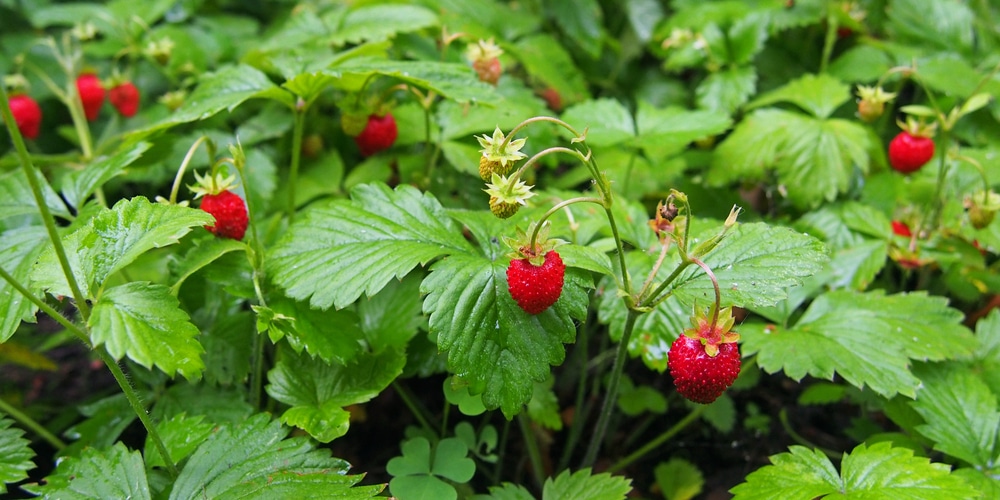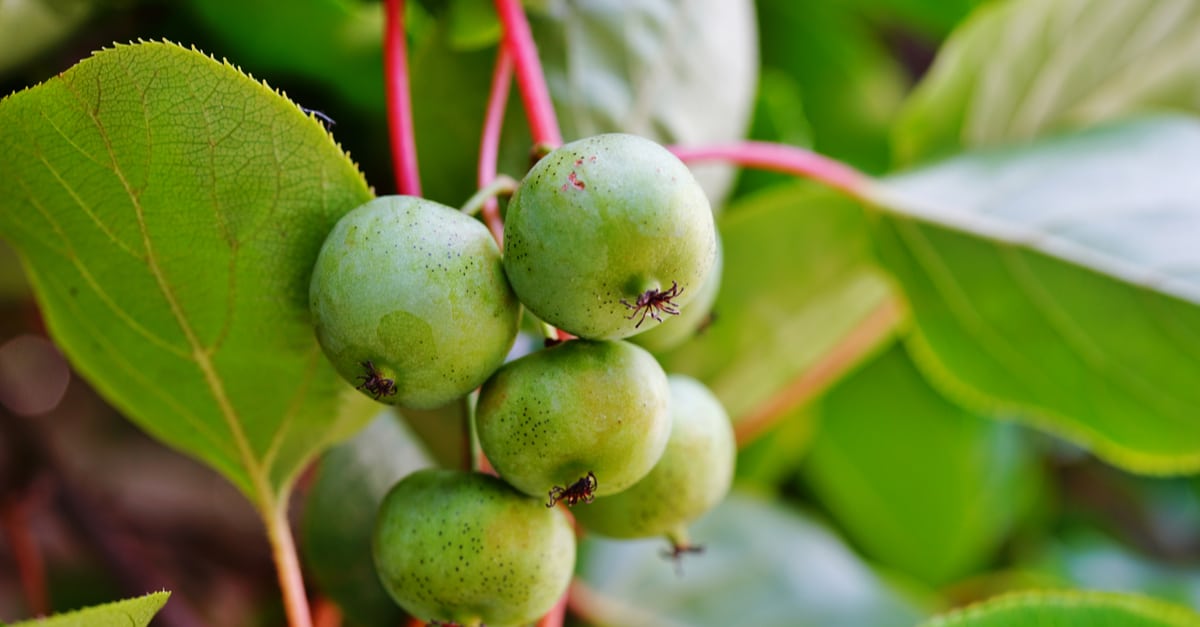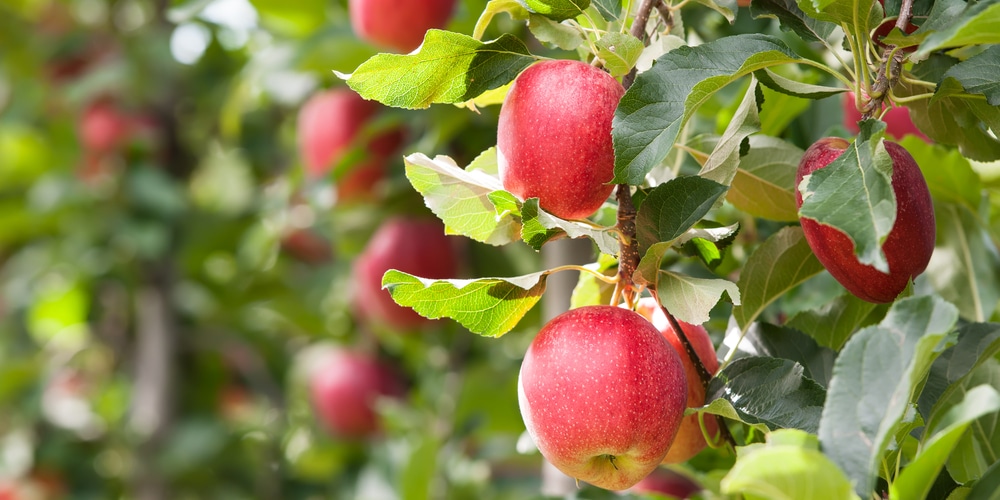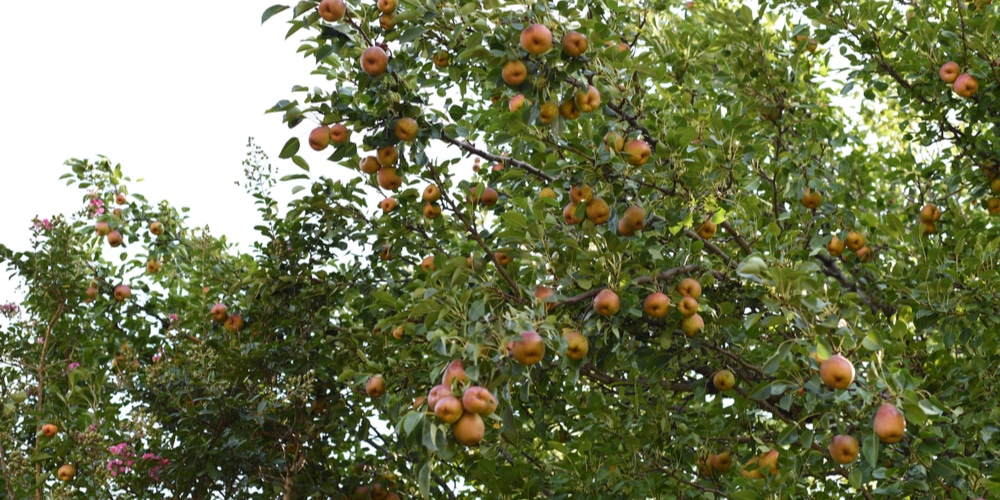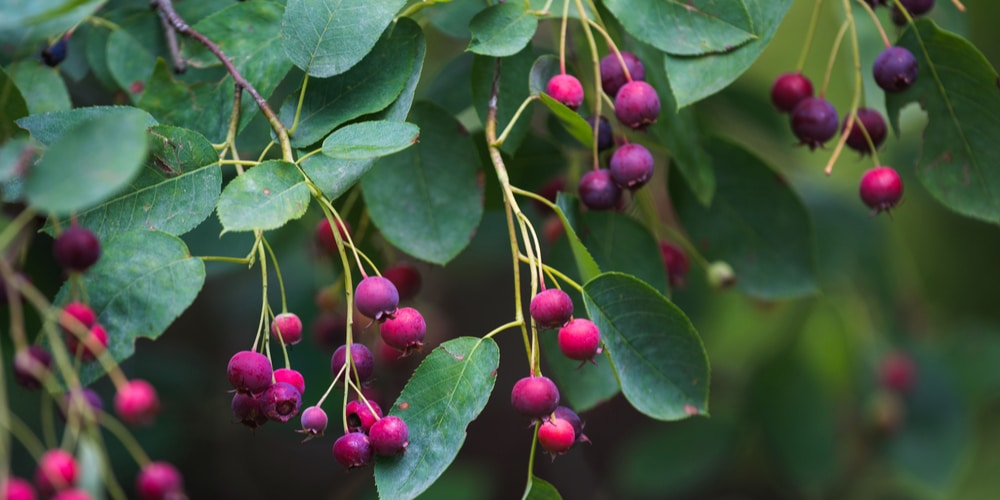At first glance, it may look like no fruit tree will be able to survive zone 4’s freezing winters, but it isn’t necessarily the case.
What types of fruit tree grow well in zone 4? Check out our list of recommendations and tips to grow them below.
Fruit trees zone 4
There are seven trees that are hardy enough to be considered the best fruit trees in zone 4.
Wild Strawberry
Wild strawberries have one of the most compact growing habits on the list. This versatile perennial tends to stay low and can act as ground cover around your other zone 4 fruit trees.
This fruit species doesn’t need much care other than putting them in a location that gets full sunlight. Water the plant regularly and soon you’ll see strawberries starting to form. What’s great about wild strawberries is that they often produce fruit quickly, and the berries themselves are quite tasty and sweet.
Hardy Kiwi
Kiwiberries are named as such because they produce tiny kiwis that look and taste the same. They’re remarkable in a way because they can give you so much in such a short amount of time!
Zone 4 gardeners may need to plant a male and female type for cross-pollination. As far as requirements are concerned, you should put them in a bright and sunny location where it gets a minimum of 4 hours sunlight. Support is also needed as it adopts a growing characteristic similar to grapes.
Gala Apple
You’ve probably tasted a gala apple before, and if you like apples then it’s high time you consider growing one in your zone 4 garden.
Gala trees are not fussy and can grow by themselves, provided that you start them right. This fruit species can thrive in a variety of soil types and needs full sun to produce bountiful harvests. You can get more if you pair it with a Honeycrisp, but a standalone Gala is okay.
Homegrown galas taste better than their store counterparts. You don’t have to wait long to see the fruits of your labor either, as it tends to fruit even while young.
Montmorency Cherry
Montmorency Cherries are favorites in zone 4 because they produce bumper crops and are great as a preserve, juice and in cherry pies.
This fruit tree self-pollinates and is characterized as a ‘heavy bearing plant’, which means you can plant a single tree and it will become very productive for years. With Montmorency, you don’t have to worry that you won’t be able to eat all the fruits you’ve harvested, as the cherries dry and freeze well, and make delicious cherry pies.
Bartlett Pear
Bartlett Pear is a certified zone 4 fruit tree. It’s tough enough to survive harsh winters and frost, and the fruit it gives is well worth the effort you put into growing them.
Landscape-wise, you won’t get as good-looking a fruit tree as the Bartlett. It’s vigorous, sprawling and works great as a sole attraction. The white flowers are pure and tend to invite birds, bees and butterflies into your garden.
This pear tree variety fruits well on its own, but you can pair it with another species, particularly Comice, D’Anjou or Bosc.
Toka Plum
Toka plum should be top on your list if you only have room for one fruit plant in your yard or garden.
It gets the nickname ‘bubblegum plum’ because of the sweet fruits you get in the summer. Toka Plum also self-pollinates so you don’t have to rely on another. This plum tree species grows to 10 feet tall and can withstand zone 4 frosts and winters.
It’s recommended that you plant Toka in full sun and constantly reinforce its growth with organic mulch and fertilizer. Then, sit back and enjoy bubblegum-scented fruits when summer arrives.
Regent Saskatoon Serviceberry
Blueberries might be difficult to grow in zone 4, but you’ll still have an alternative- the Regent Saskatoon Serviceberry.
The fruit plant is perhaps the easiest to grow in the list. The shrub maxes out at just 6 feet and works very well as a border or hedge. You’ll need full sun and well-draining soil to get the most berries, and it’s recommended that you do a bit of pruning once the flowers are spent.
Related Article: How to Grow Serviceberry From Seed?
Fruit trees zone 4: Conclusion
Many fruit trees grow well in a colder climate, including serviceberry, apples, pears, plums, and wild strawberries. Choose the right tree for your yard and climate zone and you’ll be able to produce a great harvest! Many non fruit trees do well in the north as well. For instance, the magnolia tree does great in zone 4.
